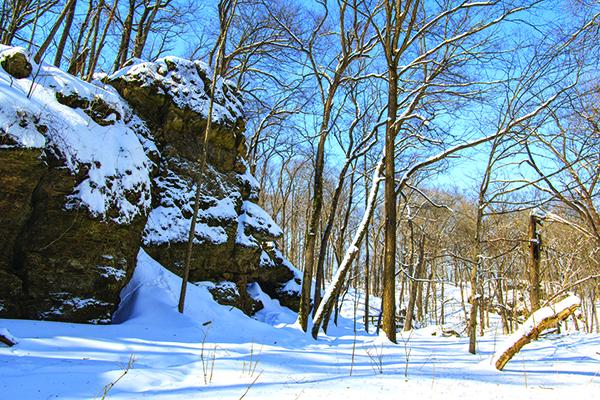Forests, forestry and logging are one of the few elements in our economy that are truly green. They provide a managed future, healthy forests and low-cost products that use less energy, water and other resources during manufacturing, and then enhance environmental services such as clean water, desired wildlife habitat, climate benefits and greater ecological resiliency. No other raw material does this. (stock photo)
By Bill Cook
MSU Extension forester/
biologist, retired
As an MSU Extension forester, Bill Cook provided educational programming for the entire Upper Peninsula.
ESCANABA – If you love forests, then you also need to love loggers, sawmills, papermills and thousands of other companies that comprise the forest industry.
For too long, logging and the forest industry community have been unfairly regarded with disdain and mistrust. Certain elements of the environmental community have taken great pains to paint the industry with a long list of disagreeable labels.
And it just ain’t so.
Were there times when lots of bad things were done to our forests? You betcha. A hundred-plus years ago wanton logging and subsequent wildfire left the resource in a shambles. Times were different then. Most of society viewed forests as an impediment to development and progress. The whole idea was to get rid of forests.
My have societal perspectives taken a U-turn.
Loggers have long been unfairly characterized as greedy brutes robbing, cheating and despoiling at will. And much of the media has worked to reinforce this false image. Reality is much different. In fact, reality is just the opposite, despite the news bytes that focus on the occasional huckster.
Logging, mills and the entire forest industry provide an almost unimaginable number, quantity and quality of benefits. This is not at first obvious to many, partly because of the bad rap given to the industry.
Those untenable arguments have grown old and stale.
Forestry, today, is a multi-faceted and complex profession ranging from high-end harvesting technology to field research into climate change and the roles of forests. The upshot is straightforward. Human beings require forest products and forest services, such things as wood, clean water, habitat, carbon sequestration and so on. Accordingly, forests are managed for the benefit of people. The key word is “managed”.
Forests are threatened from many angles, ownership parcellation, deer browsing, climate change, exotic species, benign neglect and yes, the loss of forest industry. To maintain all the benefits provided by forests, they must be managed. Without management, especially timber harvest, the threats will prevail.
The big bad wolf really is knocking at the door.
Forestry is a proactive solution to many environmental problems.
Management is optimized by a vibrant forest industry. Dysfunctional forested regions occur where an active forest industry is lacking, at least in the Lake States. Without a financial incentive, management will not occur. A working forest generating revenue is not an evil thing. It is a fantastic thing. Without the financial incentives from forest industry, the “non-financial” benefits will diminish.
Nature, on its own, will not provide the robust forests and forest benefits essential to support our economy, lifestyles and preferences. If you want to be a good environmentalist, hug a logger or a forester.
Forestry involves a bucket-full of biological and ecological sciences that are employed to create the sort of flourishing forests that most of us would like to see. The practices are not always pretty, in fact they sometimes look bad, but prettiness isn’t an effective measure of forest health.
We no longer live in a country inhabited by a few million people. We have over 380 million people with many demands, including those that derive from forests. The “pristine” forests of two centuries ago are gone forever and will never be seen again.
We need to look to the future, not the past.
Our forests must be purposefully built into sustainable resources that support both current and future generations. This will not happen naturally. Forest science, logging technology and wood-based mill diversity are the drivers to achieve such a resource.
The road to vital and productive forests has never been easy. The future has some serious challenges, including an unfavorable urban mythology.
Michigan and Wisconsin wood product manufacturing sectors contribute around fifty billion dollars to a three-quarter trillion dollar economy. And the fifty billion doesn’t include many end-products made largely of wood. This sector was built over many decades, advancing with technologies and demands, and parts are next to impossible to re-create if dismantled, such as timber harvesting. Case studies abound.
When major mills close, the ripples reach deeply into communities within a hundred miles. The ripples also run through the forests themselves, as habitat degrades, invasive species run unchecked, tree mortality exceeds growth and the land sprouts vacation homes instead of trees.
Some of these negative impacts simply cannot be reversed.
Forests, forestry and logging are one of the few elements in our economy that are truly green. They provide a managed future, healthy forests and low-cost products that use less energy, water and other resources during manufacturing, and then enhance environmental services such as clean water, desired wildlife habitat, climate benefits and greater ecological resiliency.
No other raw material does this. Yes, Sally, you can have your cake and eat it, too.


